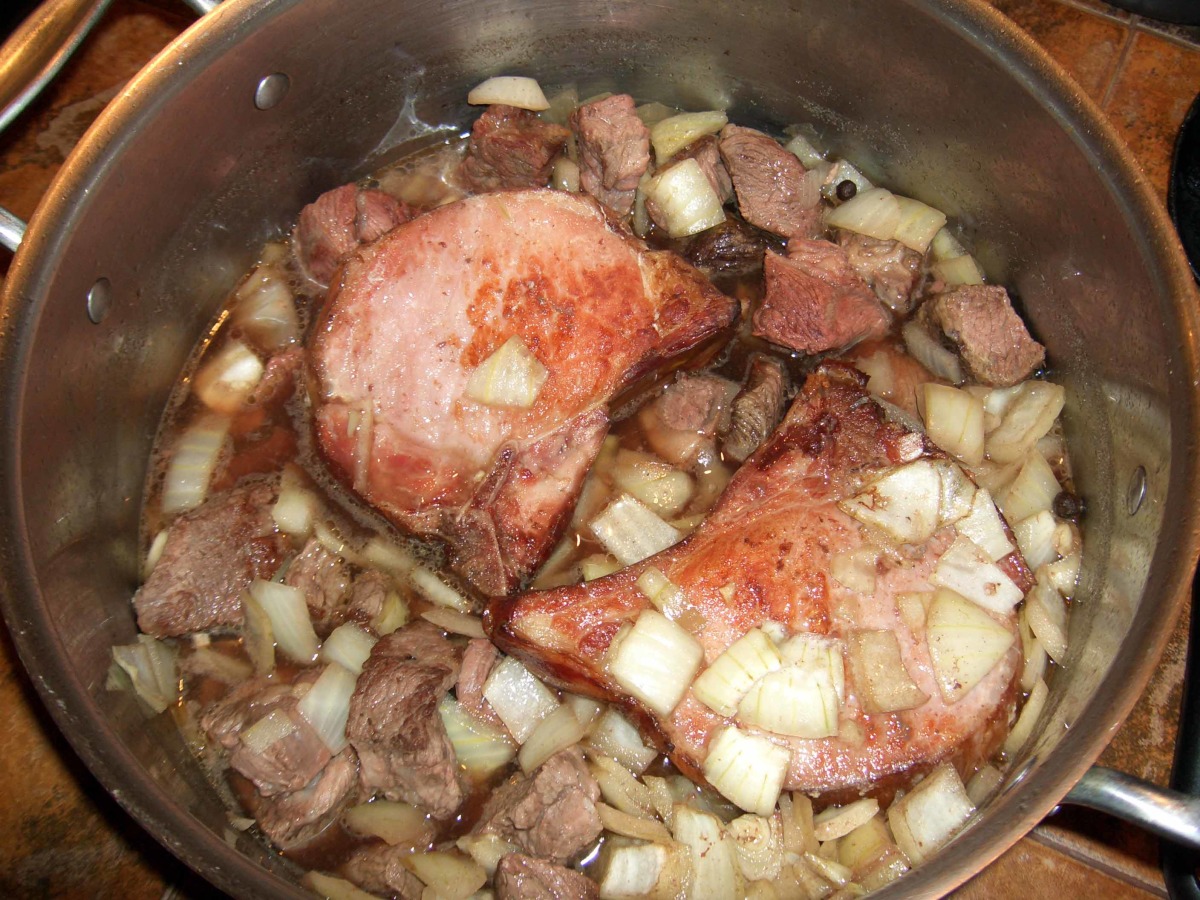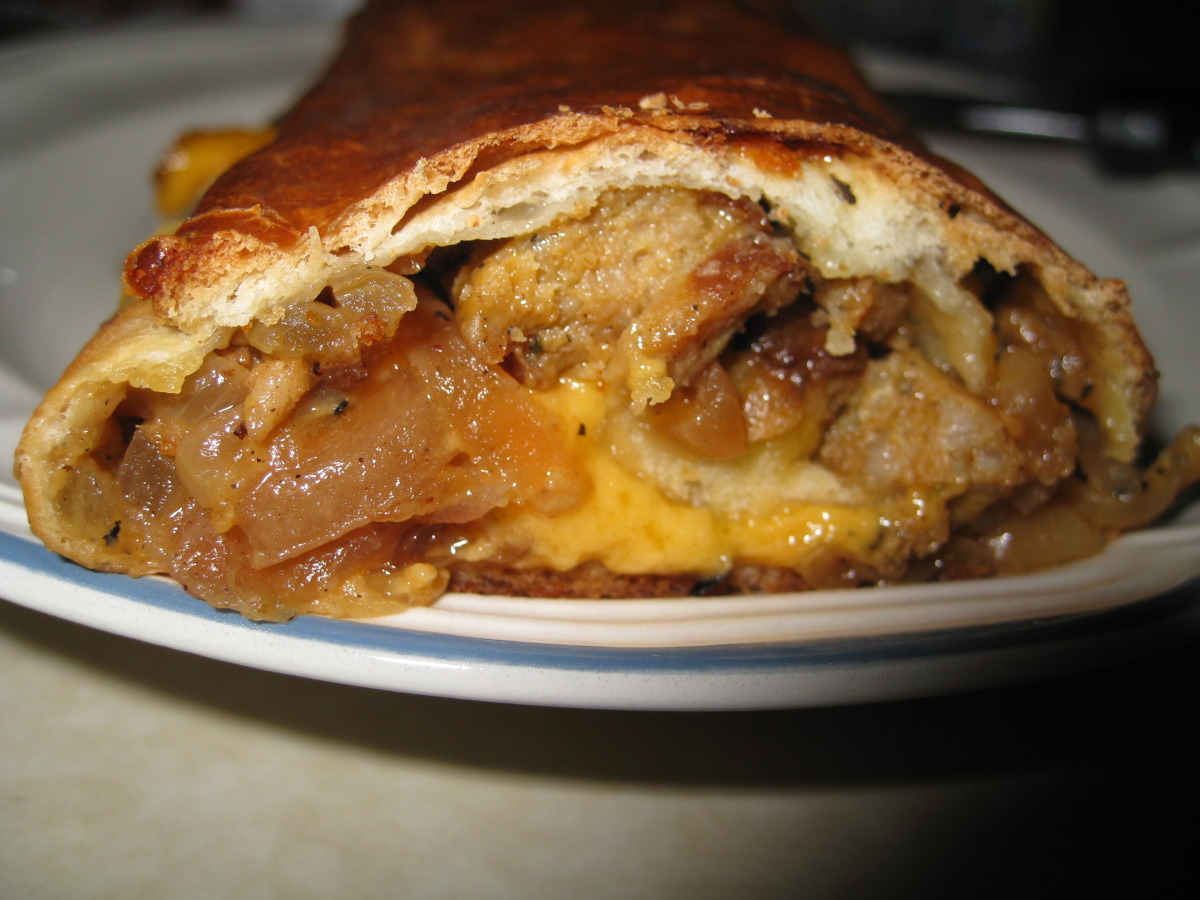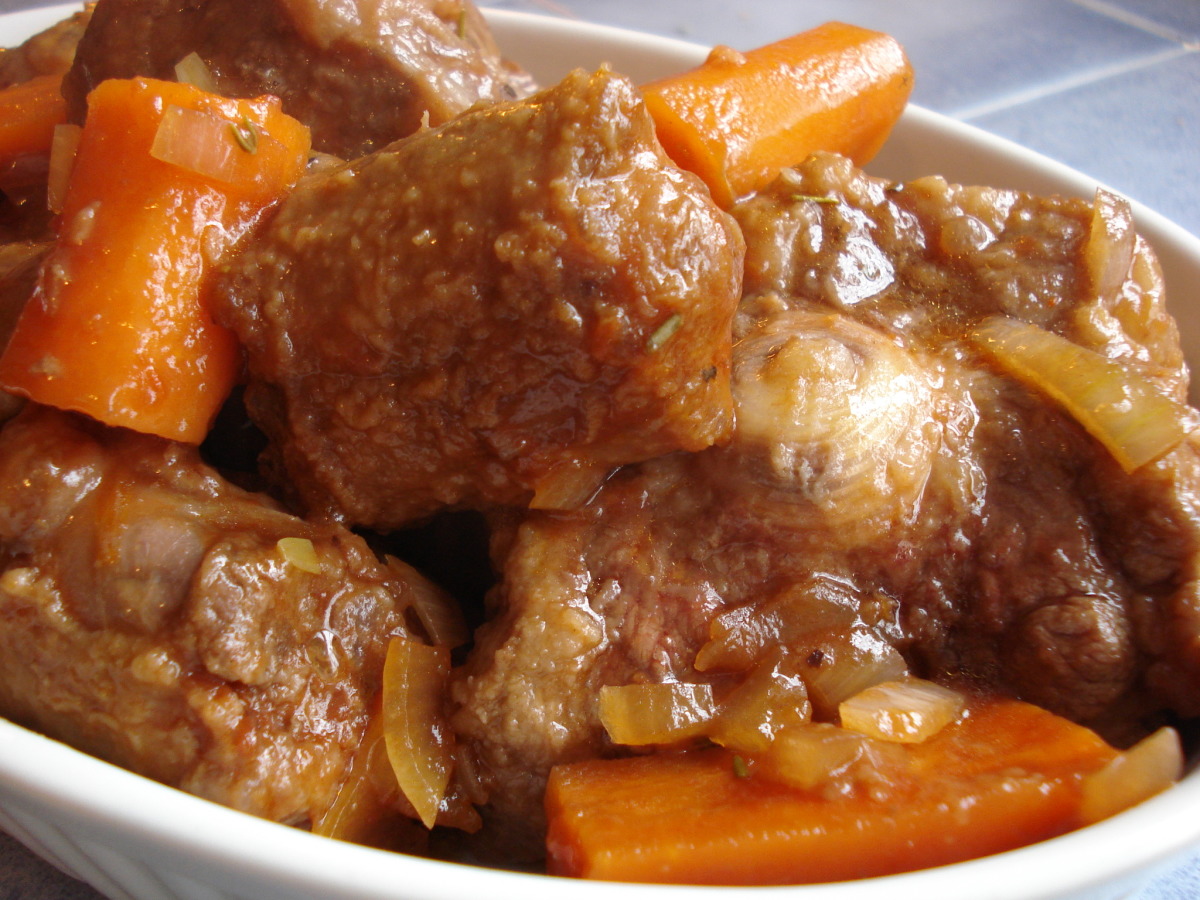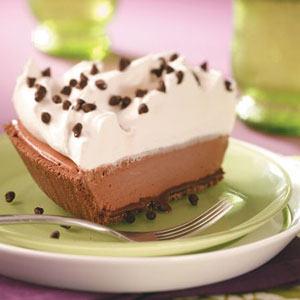**Indulge in the Rustic Charm of Italian Bread: A Culinary Journey Through Three Beloved Recipes**
Embark on a culinary adventure to the heart of Italy with our exploration of three iconic Italian bread recipes. From the classic Ciabatta to the hearty Focaccia and the irresistible Pane Pugliese, each bread tells a unique story of culinary heritage and regional flavors. These recipes, meticulously crafted to replicate the authentic taste and texture of traditional Italian bread, will transport you to the bustling bakeries and sun-drenched piazzas of Italy. Whether you're a seasoned baker or just starting your bread-making journey, these recipes offer a delightful balance of simplicity and authenticity, ensuring a rewarding and delicious experience.
1. **Ciabatta:** Dive into the world of Ciabatta, a beloved Italian bread renowned for its airy crumb and crispy crust. Originating from the northern regions of Italy, this bread's distinctive shape and large holes are a testament to the mastery of Italian bakers. Our recipe guides you through the process of creating this classic bread, from mixing the dough with the perfect blend of flour, water, yeast, and salt to the delicate shaping and baking techniques. Discover the secrets of achieving that perfect balance between a chewy interior and a shatteringly crisp crust.
2. **Focaccia:** Experience the rustic charm of Focaccia, a flatbread with a rich history dating back to ancient Rome. Hailing from the Liguria region, Focaccia is characterized by its golden-brown crust, dimpled surface, and generous topping of olive oil, herbs, and sea salt. Our recipe takes you on a culinary journey to Liguria, providing step-by-step instructions for creating this flavorful bread. Learn how to achieve the perfect dough consistency, how to create those signature dimples, and how to select the best toppings to create a truly authentic Focaccia experience.
3. **Pane Pugliese:** Immerse yourself in the hearty goodness of Pane Pugliese, a traditional bread from the sun-kissed region of Puglia, Italy. Known for its golden crust, chewy crumb, and slightly tangy flavor, Pane Pugliese is a staple in many Italian homes. Our recipe unveils the secrets of crafting this artisan bread, from selecting the right flour to mastering the art of shaping and scoring the dough. Discover how to create the perfect balance of flavors through the combination of durum wheat flour, semolina flour, and a touch of sourdough starter.
BASIC ITALIAN BREAD BY EMERIL LAGASSE

Recipe from Foodnetwork.com. I'm going to try this in my bread machine dough only cycle and make rolls out of it.
Provided by Kerena
Categories Yeast Breads
Time 1h26m
Yield 1 loaf, 12 serving(s)
Number Of Ingredients 8
Steps:
- Place the water and yeast in the bowl of an electric mixer and allow the yeast to bloom for about 5 minutes. Using a dough hook attachment, add the flour and sugar to the water and mix on low speed until a dough starts to form. Drizzle the oil and salt into the dough and beat on medium speed for 8 to 10 minutes, or until a smooth, firm, elastic dough is formed.
- Transfer the dough to a lightly oiled bowl and spray the dough with a thin coating of cooking spray. Wrap the bowl with plastic wrap and set aside to proof in a warm, draft-free place for 11/2 hours or until doubled in size. Remove the plastic wrap, punch down and flatten the rounded dough with the heel of your hand. Roll the dough up tightly, sealing the seam well after each roll. The dough should be elongated and oval-shaped, with tapered and rounded (not pointed) ends.
- Preheat the oven lined with a pizza stone to 425 degrees F. Alternately, an inverted baking sheet may be used in place of a pizza stone.
- Place the dough on a baker's peel heavily dusted with semolina flour, or cornmeal, or alternately on an inverted baking sheet. Allow the dough to proof, loosely covered with a damp towel, for 30 minutes, or until doubled in size. Brush the dough with the egg white and sprinkle the sesame seeds over the top. Using a razor blade or sharp knife, score 3 (1/4-inch deep) slashes across the top of the dough at a 45 degree angle.
- Spray the dough generously with water from a water bottle and place in the oven on the baking stone. Immediately close the oven and bake for 3 minutes. Open the oven door and spray the dough again with the water bottle. Close the oven door and bake for an additional 3 minutes before spraying the dough for a third time (the spraying of the dough will ensure a crisp golden brown crust). Bake the dough for 45 minutes, or until a hollow thud is heard when the bread is whacked with the bowl of a wooden spoon. Allow the bread to cool slightly before serving.
BASIC ITALIAN BREAD
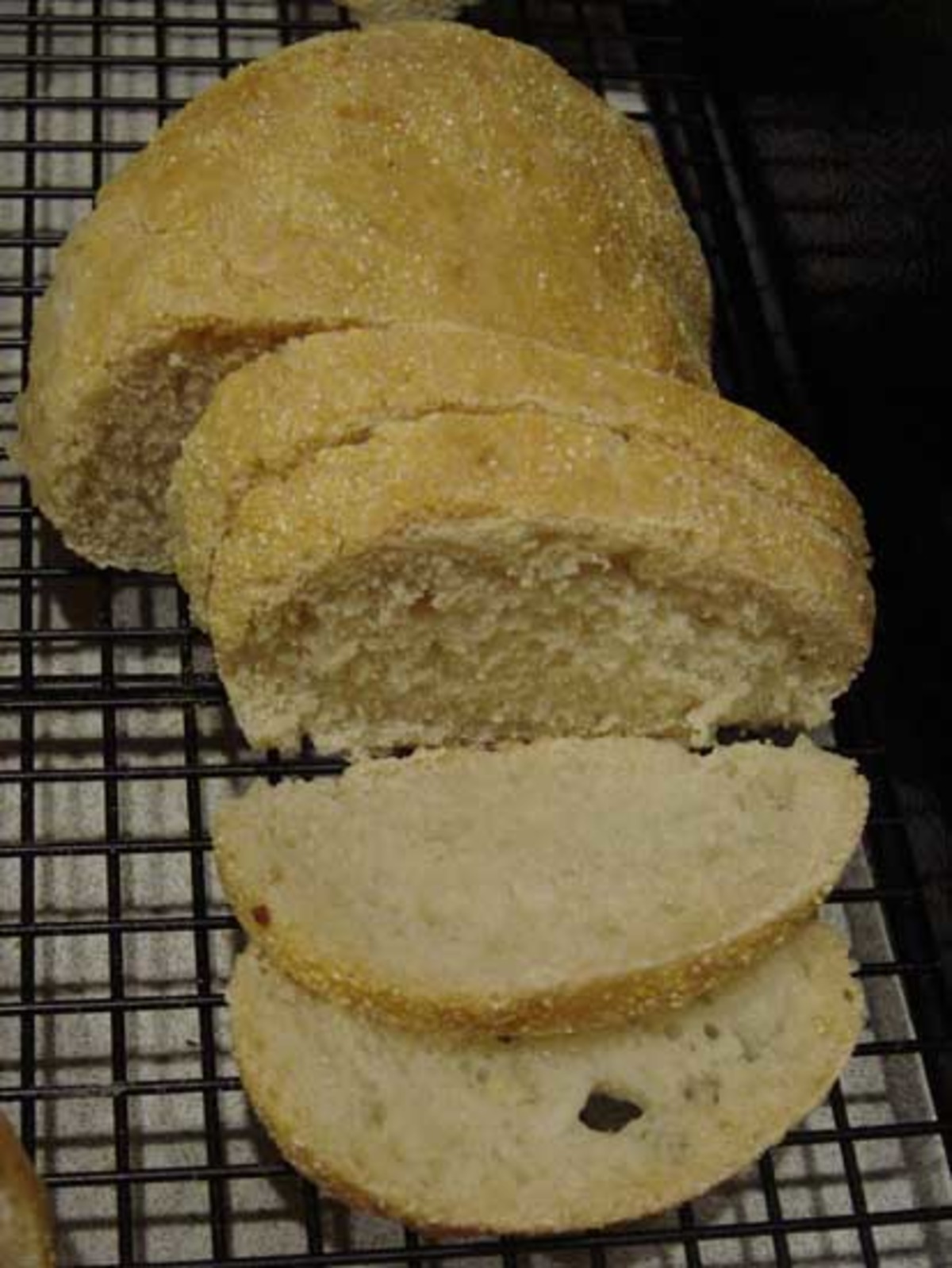
The addition of herbs or sun-dried tomatoes easily transforms this basic Italian bread into an extra tasty treat. Prep time includes the time to make the starter and 2 rises.
Provided by Dee514
Categories Yeast Breads
Time 9h10m
Yield 1 Large loaf
Number Of Ingredients 7
Steps:
- Biga: Mix the yeast and water together, and then slowly start adding the flour, mixing well. Cover with plastic wrap and let sit at room temperature for up to 6 hours, or refrigerate overnight.
- Bread: Place the water in a large bowl, sprinkle the yeast over top and mix well. Let sit 10 minutes until bubbly.
- Add the biga, flour, and salt and stir with a wooden spoon (or mix with your hands) until everything is mixed. The dough will be fairly wet and sticky at this point.
- Cover and let stand in a warm spot for about 1 to 1 1/2 hours until doubled in volume. Punch down the dough, folding it over on itself two or three times, cover and let rise once more until doubled, about 1 hour.
- To bake the following day, refrigerate the dough at this time and leave it overnight.
- Turn out your dough onto a floured baking sheet, and without overworking it too much, shape into one large or two smaller round or oval shaped loaves, using as much extra flour as needed to keep it from sticking. Slash across the tops of the loaves with a serrated knife or razor just prior to baking.
- Preheat the oven to 350° F and place a casserole dish with boiling water on the lower oven rack. Bake for 30 minutes, turn the baking sheet around, and reduce the heat to 300°F and bake for another 30-45 minutes. Bread should be golden brown and should sound hollow when you tap the bottom.
- Allow the bread to cool to room temperature and serve.
- Baking Tip: You could also use a baguette pan to make long thin loaves, or spread your dough across a well-oiled cookie sheet to make focaccia.
- Variations:*Roasted Garlic & Basil Bread: Coarsely chop 1-2 heads (bulbs) roasted garlic and add to flour along with about 1 teaspoon crushed dried basil.
- Rosemary Bread: Add 4 Tablespoons finely chopped fresh rosemary to the flour. Brush the loaves with water and sprinkle with coarse sea salt just prior to baking.
- Olive Bread: Add 12 ounces flavorful, pitted olives, coarsely chopped to the flour.
- *To roast garlic: Heat oven to 350°F Peel away paper like skin from around the garlic bulbs leaving just enough to hold bulb intact. Trim tops of garlic bulbs about 1/2 inch to expose cloves. Place bulbs stem ends down on 12 inch square of foil. Drizzle each bulb with 2 teaspoons olive or vegetable oil. Wrap securely in foil and place in pie plate or shallow baking pan.
- Bake 45 to 50 minutes or until garlic is tender when pierced with toothpick or fork.
- Cool slightly. Gently squeeze garlic out of cloves (1 ounce bulb of roasted garlic= about 1 Tablespoon mashed garlic).
BASIC ITALIAN BREAD
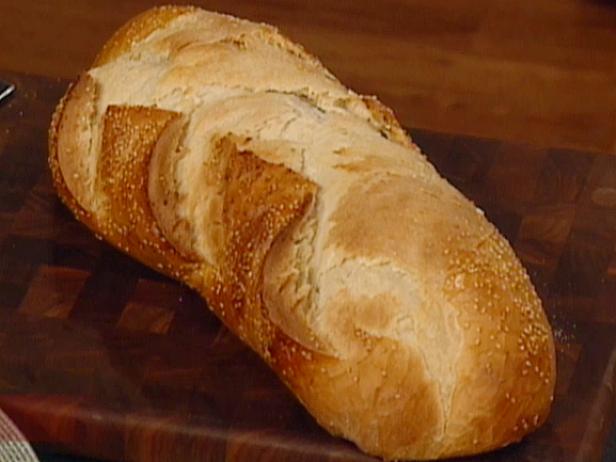
Provided by Food Network
Time 3h26m
Yield 1 large loaf Italian bread
Number Of Ingredients 8
Steps:
- Place the water and yeast in the bowl of an electric mixer and allow the yeast to bloom for about 5 minutes. Using a dough hook attachment, add the flour and sugar to the water and mix on low speed until a dough starts to form. Drizzle the oil and salt into the dough and beat on medium speed for 8 to 10 minutes, or until a smooth, firm, elastic dough is formed.
- Transfer the dough to a lightly oiled bowl and spray the dough with a thin coating of cooking spray. Wrap the bowl with plastic wrap and set aside to proof in a warm, draft-free place for 11/2 hours or until doubled in size. Remove the plastic wrap, punch down and flatten the rounded dough with the heel of your hand. Roll the dough up tightly, sealing the seam well after each roll. The dough should be elongated and oval-shaped, with tapered and rounded (not pointed) ends.
- Preheat the oven lined with a pizza stone to 425 degrees F. Alternately, an inverted baking sheet may be used in place of a pizza stone.
- Place the dough on a baker's peel heavily dusted with semolina flour, or cornmeal, or alternately on an inverted baking sheet. Allow the dough to proof, loosely covered with a damp towel, for 30 minutes, or until doubled in size. Brush the dough with the egg white and sprinkle the sesame seeds over the top. Using a razor blade or sharp knife, score 3 (1/4-inch deep) slashes across the top of the dough at a 45 degree angle.
- Spray the dough generously with water from a water bottle and place in the oven on the baking stone. Immediately close the oven and bake for 3 minutes. Open the oven door and spray the dough again with the water bottle. Close the oven door and bake for an additional 3 minutes before spraying the dough for a third time (the spraying of the dough will ensure a crisp golden brown crust). Bake the dough for 45 minutes, or until a hollow thud is heard when the bread is whacked with the bowl of a wooden spoon. Allow the bread to cool slightly before serving.
Tips:
- To achieve a crispy crust and a soft, chewy interior, it's crucial to use bread flour. Bread flour has a higher protein content compared to all-purpose flour, which leads to stronger gluten development and a better rise.
- Pay close attention to the kneading process. Proper kneading helps develop the gluten in the dough, resulting in a smooth and elastic texture. If you're using a stand mixer, knead the dough on medium speed for about 5 minutes until it passes the windowpane test. If kneading by hand, aim for 10-12 minutes.
- Don't skip the proofing stage. Proofing allows the yeast to ferment and produce carbon dioxide, which is essential for the bread to rise properly. The first proof should be done in a warm place for about 1-1.5 hours, or until the dough has doubled in size. After shaping, let the dough proof again for about 30-45 minutes, or until it has risen by about half.
- Bake the bread in a preheated oven. This ensures that the bread has an even bake throughout. For a crispy crust, place a pan of water at the bottom of the oven during baking.
- Once baked, let the bread cool completely before slicing and serving. This helps prevent the bread from becoming gummy.
Conclusion:
With careful attention to detail and a bit of practice, you can create delicious, authentic Italian bread at home. This basic recipe provides a solid foundation for experimenting with different flavors and techniques. Whether you prefer a classic white loaf, a hearty whole wheat bread, or something in between, the versatile nature of this recipe allows you to customize it to your liking. So, gather your ingredients, preheat your oven, and get ready to embark on a delightful culinary journey into the world of Italian bread baking!
Are you curently on diet or you just want to control your food's nutritions, ingredients? We will help you find recipes by cooking method, nutrition, ingredients...
Check it out »
#weeknight #time-to-make #course #cuisine #preparation #occasion #healthy #breads #oven #easy #european #low-fat #italian #dietary #low-cholesterol #low-saturated-fat #comfort-food #healthy-2 #yeast #low-in-something #taste-mood #equipment #number-of-servings
You'll also love




